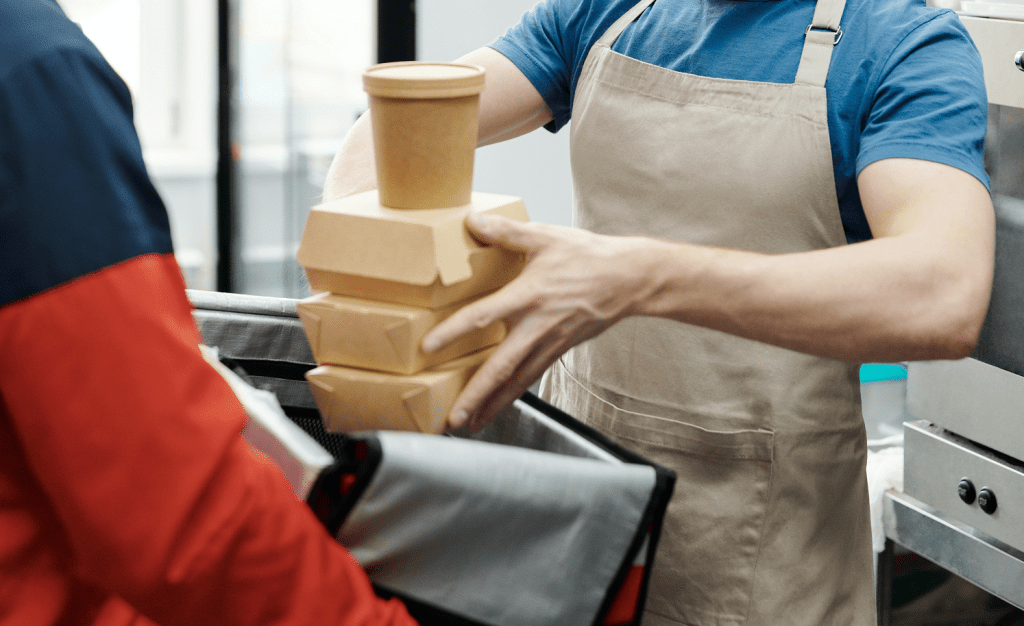Sustainability and Quick-Service Restaurants
As restaurants begin the recovery process, sustainability will return to be top of mind for consumers, especially for quick-service restaurants.
Delicious, affordable, and convenient meals can and must also be sustainable – at least that’s what Restaurant Brands International (RBI) has shown through their commitment to implementing sustainable business practices across their brand portfolio with Tim Hortons, Burger King, and Popeyes.
From phasing out non-biodegradable plastic toys in the kid’s meals by 2025 in Canadian Burger King locations to committing to eliminating deforestation from all their brand’s supply chains by 2030 (or sooner), the impact large chain QSRs can have on the environment is incredible.
And RBI is not alone in their awareness that sustainable actions matter.
A University of Alberta study found that 27 different municipalities, including Vancouver, Toronto, and Calgary are limiting the number of quick service restaurant (QSR) drive-thrus in their downtown cores. Rationale for the bylaw introduction included health concerns, worries about the environmental impacts of idling, and the need to promote sustainability and sustainable development in those urban centres.
There’s no question that customers are seeking out brands making a commitment to a more sustainable future and, increasingly, they’re voting with their wallets for greener options and accountability. The question is, in a competitive marketplace, how do restaurants turn these lofty promises into measurable results? The answer – technology.
Why Tech Matters
As the restaurant industry continues to move toward changing its business to reflect corporate sustainability strategies and policies, they will increasingly need to rely on technology to keep them competitive while making the right choices for the planet.
According to the food research and consulting firm, Technomic, “while almost three quarters of operators (72%) recognize the need to focus on sustainable practices, they also understand that they need support in achieving their sustainability targets.”
This is where manufacturers can play a role, supporting restaurants to meet the demands of customers against a backdrop of tight margins and high overhead costs.
Cutting the Line
With dozens of Canadian communities from Toronto to
Vancouver now considering banning the drive-thru, QSRs can choose to either
steer their business toward more innovative, sustainable options, or stay idle.
To meet consumer demands of sustainability and efficiency, businesses must
reimagine the traditional window service in today’s technology-driven economy.
Incorporating automation through pre-ordering via mobile apps or digital pre-payment
and food locker pickup options can help QSRs move customers through the drive
thru faster, cutting down on the time spent idling in a vehicle and reducing
the environmental impact. It has the additional benefit of getting customers a
more accurate order, more quickly, helping businesses keep pace with the demand
for digitization and customization. Not only will this help from a
sustainability aspect, but it helps restaurants maximize their own
profitability by improving processes and creating efficiencies.

The Future is Now
You don’t have to imagine a world where smart systems are running in the background of your favourite lunch spot to make sure that the kale for your favourite protein bowl or the iceberg lettuce for your burger are ordered and arriving just in time – that technology is here.
And when mobile ordering apps, point of sale (POS), and back of house systems are working in unison – the result is a solution that can keep track of what’s being used and adjust ordering. End-to-end solutions like those offered by Panasonic can minimize food waste, drive efficiencies, reduce losses, increase customer engagement, improve revenue, and unlock insights and marketing opportunities
And as the application of artificial intelligence and machine learning to restaurant technology becomes more and more sophisticated – restaurants will be able to adjust to any variable, from a shortage of product to a busy time of the month, and order just the right amount of inventory.
The Business Case for Cutting Waste
Research shows that cutting food waste is not just good for the environment – it’s good for the bottom line. A 2019 study by the non-profit World Resources Institute looked at financial data from 114 restaurants in 12 countries that took actions to reduce food waste, and found that for each dollar invested, restaurants saved an average of $7.
Overall, restaurants in the study cut food waste by an average of 26 per cent in a year, and 58 per cent over three years. That brings them in line with the UN Sustainable Development Goal to cut global food waste in half. Most businesses began to make changes by simply measuring food waste and scaling back orders accordingly.
To put this in perspective, Mary Brown’s Chicken & Taters, Canada’s largest chicken QSR, was in dire need of a tech upgrade to their POS system to meet the company’s aggressive expansion plans. By upgrading POS hardware and introducing intuitive AI technology like Panasonic’s iQtouch software, this QSR was able to streamline various processes and efficiencies – the most notable occurring in their kitchens. Productivity skyrocketed and order accuracy greatly improved or improved reducing overall food waste, ultimately leading to a positive impact on the company’s bottom line.
The Bottom Line
According to the UN, if food loss and waste were its own country, it would be the third-largest greenhouse gas emitter. It’s a staggering statistic. And as restaurants move to make good on sustainability targets for cutting food waste, suppliers of technology have an important role to play.
In a statement outlining the company’s goals, RBI CEO José Cil said, “by focusing on our ingredients, reducing our environmental footprint, sourcing sustainably, and investing in people and communities… [this] brings us closer to achieving our dream, while protecting our planet and business for the long-term.”
Technology manufacturers must and will continue to be that partner by innovating and providing real solutions for retailers looking to drive efficiency and tackle the problem of food waste. Restaurants are focused on this goal and rightly so. It is important to their customers, to their bottom line and to the future health of our planet.









